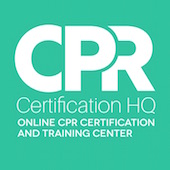While Bystander CPR is considered being a potent and straightforward intervention increasing the survival chances of an out-of-hospital cardiac arrest victim more than double; the success rate is not more than forty percent. However, “Telephone CPR” also known as TCPR has been shown to drastically escalate the rates of bystander CPR and is also associated with better patient survival. Telecommunicators come across a number of challenges when receiving an emergency call for cardiac arrest. Majority of the callers are distressed and it is very hard for the call-takers to manage. These callers may contradict themselves or can be unclear, shut the phone in between, or sometimes can totally refuse to cooperate. Moreover, Out-of-hospital cardiac arrest patients mostly gasp for air (agonal breathing) or show brief, seizure-like symptoms which can complicate the situation for telecommunicators and potential rescuers alike. However, properly trained rescuers or telecommunicators applying protocols based on guidelines can effectively detect out-of-hospital cardiac arrest and start bystander CPR with the help of assertive and calm instructions to the callers. These telecommunicators have the capability to turn untrained callers into real providers and save the lives of thousands across our communities each year. http://www.jems.com/articles/supplements/special-topics/five-years-10-000-saves-just-getting-started/telephone-cpr-can-optimize-bystander-action-in-out-of-hospital-cardiac-arrest.html

More articles by the writer
While Bystander CPR is considered being a potent and straightforward intervention increasing the survival chances of an out-of-hospital cardiac arrest victim more than double; the success rate is not more than forty percent. However, “Telephone CPR” also known as TCPR has been shown to drastically escalate the rates of bystander CPR and is also associated with better patient survival. Telecommunicators come across a number of challenges when receiving an emergency call for cardiac arrest. Majority of the callers are distressed and it is very hard for the call-takers to manage. These callers may contradict themselves or can be unclear, shut the phone in between, or sometimes can totally refuse to cooperate. Moreover, Out-of-hospital cardiac arrest patients mostly gasp for air (agonal breathing) or show brief, seizure-like symptoms which can complicate the situation for telecommunicators and potential rescuers alike. However, properly trained rescuers or telecommunicators applying protocols based on guidelines can effectively detect out-of-hospital cardiac arrest and start bystander CPR with the help of assertive and calm instructions to the callers. These telecommunicators have the capability to turn untrained callers into real providers and save the lives of thousands across our communities each year. http://www.jems.com/articles/supplements/special-topics/five-years-10-000-saves-just-getting-started/telephone-cpr-can-optimize-bystander-action-in-out-of-hospital-cardiac-arrest.html
Vlad Magdalin